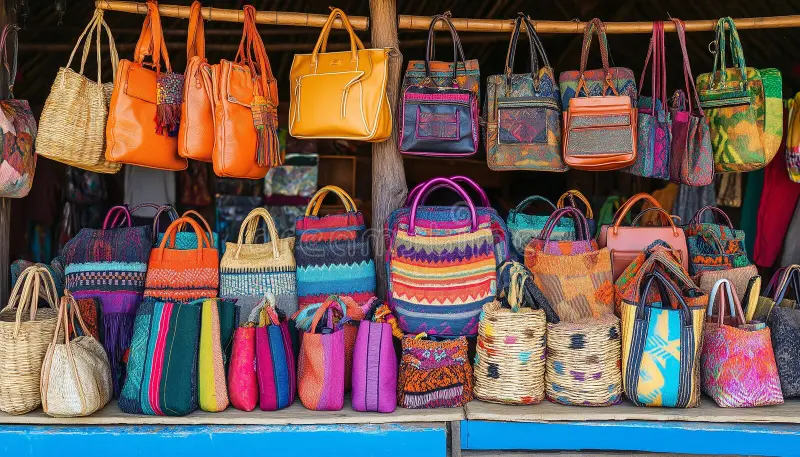Introduction
In industries where large volumes of goods need to be stored, transported, and distributed efficiently, the choice of packaging material plays a critical role. Whether you’re dealing with agricultural produce, chemicals, cement, or animal feed, the right packaging must be durable, cost-effective, and practical. Among the many packaging solutions available, woven polypropylene (PP) bags have emerged as a leading choice for bulk packaging—and for good reason.
Woven polypropylene bags offer a perfect combination of strength, flexibility, and affordability, making them a staple in various industrial and commercial sectors. In this blog, we’ll explore why these bags are ideal for bulk packaging, their advantages, common uses, and how they compare to alternative materials.
What Are Woven Polypropylene Bags?
Woven polypropylene bags are made from polypropylene plastic—a thermoplastic polymer known for its strength, flexibility, and resistance to moisture. These bags are created by weaving polypropylene tapes together using specialized looms, resulting in a fabric that is both breathable and durable.
Depending on the application, woven PP bags may be:
- Uncoated or laminated (with BOPP or other coatings)
- Printed or plain
- Open mouth or valve-type
- Gusseted, stitched, or heat-sealed
The versatility in design and function allows woven PP bags to be customized for a wide range of bulk goods.
Key Benefits of Woven Polypropylene Bags for Bulk Packaging

1. Superior Strength and Durability
One of the most notable characteristics of woven polypropylene bags is their high tensile strength. The interwoven structure provides resistance to tearing, puncturing, and impact, which is essential when handling heavy or abrasive materials such as sand, cement, fertilizers, and grains.
These bags can withstand rough handling during shipping and stacking, reducing the risk of spillage or product loss.
2. Lightweight Yet Heavy-Duty
While extremely durable, woven PP bags are also lightweight. This makes them ideal for reducing overall packaging weight—an important consideration in logistics where freight costs are calculated by weight.
Their low weight also makes manual handling easier and safer for workers in warehouses, farms, and construction sites.
3. Cost-Effective
Compared to other heavy-duty packaging options like jute or kraft paper sacks, woven polypropylene bags are more economical. Their manufacturing process is efficient, and their reusability further enhances cost savings over time.
In large-scale operations, this cost-effectiveness can have a significant impact on profitability.
4. Moisture and Chemical Resistance
Polypropylene is inherently resistant to moisture and a range of chemicals. When combined with a laminated coating, these bags can protect the contents from humidity, light, and contamination.
This is particularly advantageous for goods like fertilizers, seeds, and powdered chemicals that must remain dry and uncontaminated during storage and transport.
5. Breathability
Uncoated woven PP bags offer breathability, allowing air to circulate. This feature is critical when packaging agricultural products like potatoes, onions, and other produce that are prone to spoilage in airtight containers.
Proper airflow helps prevent mold growth and maintains product quality during storage.
6. Customizable Design and Printing
Manufacturers can customize woven PP bags to meet specific industry needs. They produce these bags in various sizes, colors, and closure types, including stitched bottoms, valve tops, and heat-sealed options.
Additionally, manufacturers use rotogravure or flexographic techniques to print on woven bags, enabling high-quality branding and clear product information display. This plays a crucial role in marketing consumer-facing products or meeting regulatory labeling requirements.
7. UV Resistance and Outdoor Compatibility
When required, woven polypropylene bags can be treated with UV stabilizers, making them suitable for prolonged outdoor storage. This helps preserve the integrity of both the bag and its contents, especially in agricultural and construction environments.
Common Applications of Woven Polypropylene Bags
The strength, affordability, and versatility of woven PP bags make them suitable for a broad range of bulk packaging applications across different industries:
Agriculture
- Grains (wheat, rice, corn)
- Seeds
- Pulses and legumes
- Fruits and vegetables (e.g., onions, potatoes)
- Animal feed and supplements
Construction
- Cement
- Sand
- Aggregates
- Admixtures and dry mortar
Chemical Industry
- Fertilizers
- Pesticides
- Industrial powders and resins
Food Industry
- Flour
- Sugar
- Salt
- Spices
Retail and Consumer Goods
- Branded rice or flour bags
- Pet food packaging
- Shopping bags (with BOPP lamination)
Woven PP Bags vs. Other Packaging Materials
Woven PP vs. Jute Bags
- Durability: Woven PP is more resistant to moisture and tearing.
- Cost: Jute is typically more expensive.
- Eco-friendliness: Jute is biodegradable, while PP is recyclable but not biodegradable.
Woven PP vs. Paper Bags
- Moisture resistance: PP is far superior.
- Strength: Woven PP offers much higher tensile strength.
- Reusability: Paper bags are single-use in most cases; woven PP can be reused multiple times.
Woven PP vs. Non-Woven Bags
- Application: Non-woven bags are more common in retail shopping, while woven PP excels in industrial and bulk use.
- Strength: Woven PP bags are stronger and more suitable for heavy goods.
Environmental Impact and Sustainability
While polypropylene is not biodegradable, woven PP bags can be reused and recycled, helping reduce single-use plastic waste. Many companies now offer recyclable and recycled-content woven bags, enhancing their environmental credentials.
Moreover, the long life cycle of woven PP bags reduces the number of bags you need over time, especially in applications where you use the bags multiple times before disposal.
For industries aiming to lower their environmental impact, woven polypropylene bags offer a middle ground between functionality and sustainability—especially when managed through responsible recycling practices.
Choosing the Right Woven PP Bag for Your Business
When selecting woven polypropylene bags for your packaging needs, consider the following:
- Weight and volume of the product (to determine size and strength)
- Moisture sensitivity (to decide between uncoated or laminated)
- Storage conditions (need for UV resistance or breathability)
- Regulatory requirements (labeling, branding, safety warnings)
- Handling and transport (options like valve bags or FIBCs for automation)
An experienced packaging supplier can customize your woven bags to meet your product’s specific requirements.
Also Read: Woven vs. Non-Woven Bags: What’s the Difference and Which Is Better?
Conclusion
Woven polypropylene bags have proven their value as a reliable, durable, and economical solution for bulk packaging across a range of industries. Their ability to combine strength, light weight, moisture resistance, and customizability makes them a preferred choice for businesses aiming for efficiency and cost savings.
As packaging demands evolve, and as businesses place greater emphasis on sustainability, manufacturers continue to develop woven PP bags as a flexible platform, adapting them through innovations in recycling, coatings, and design. Whether you operate in agriculture, construction, chemicals, or retail, you can rely on woven polypropylene bags as a strategic investment for secure and scalable packaging.
